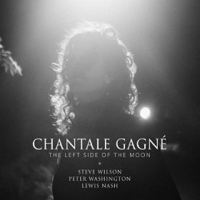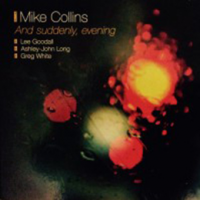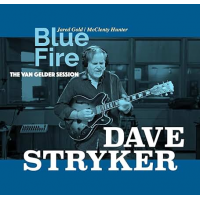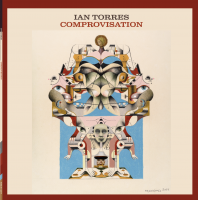Home » Jazz Articles » Extended Analysis » Vijay Iyer Trio: Vijay Iyer Trio: Break Stuff
Vijay Iyer Trio: Vijay Iyer Trio: Break Stuff
In less than a year since moving from one German label (ACT) to another (ECM), Iyer has managed to put out no less than three releases. Mutations, released in March 2014, was a bold first statement from the lauded label that, combining piano and electronics with a string quartet, suggested considerably greater freedom for a pianist who, in addition to becoming a Franklin D. and Florence Rosenblatt Professor of the Arts at Harvard last year, was awarded a MacArthur Fellowship in 2013 and, since emerging twenty years ago this year with his leader debut, Memorophilia (Asian Improv), has received numerous—almost countless—other awards and critical accolades. Released just eight months later in November 2014, Radhe Radhe: Rites of Holiday was an even more ambitious collaboration with filmmaker Prashant Bhargava in commemoration of the centenary of classical composer Igor Stravinsky's influential and groundbreaking "The Rite of Spring."
Break Stuff, in its return to the pianist's eleven year-old trio with bassist Stephan Crump and drummer Marcus Gilmore, might seem like a less ambitious recording on the surface, but to think so would be a mistake. Iyer, it seems, does nothing without a purpose, and if the palette available to him here is somewhat reduced, that should in no way be taken as a sign that Break Stuff is either an easier...or less considered...listen. What Iyer sacrifices in sonic options he more than makes up for in the chemistry that this longstanding trio has developed over the course of its now three albums (five, if you include two additional recordings made with the addition of saxophonist Rudresh Mahanthappa).
As distanced as Iyer's music has increasingly become, three of Break Stuff's dozen tracks still make clear his ever-present allegiance to the jazz tradition, even if his interpretations reflect a voice that only occasionally wears its influences on its sleeve. "Work," by Iyer's "number one hero of all time," Thelonious Monk, is perhaps the most faithful; delivered in conventional head-solo-head fashion, it's a rare moment where the trio actually swings in a traditional manner—though there's little doubting that this trio swings, in its own way, throughout this 71-minute program. What the inclusion of "Work" accomplishes, however—beyond impressive soloing from both Iyer and Crump, with Gilmore's brush work opening up to even more simpatico stick work—is to clarify just how Monk's idiosyncrasies imbue Iyer's entire approach, even though the pianist has traveled a long way from imitation or even stricter reverence.
An even quirkier look at John Coltrane's "Countdown" demonstrates how Iyer's trio is capable of deconstructing the most familiar material into something deeply personal. Despite time—based largely on West African music in general and Gilmore touchstone Brice Wassy in particular—remaining largely fluid, with the composer's changes only overtly revealed about halfway through its six-minute duration, Iyer delivers some of his most virtuosic playing of the set...and Gilmore's most incendiary.
Iyer goes solo for a briefer look at Billy Strayhorn's "Blood Count," demonstrating that as knotty as he can sometimes be, a gentler, more beauty-laden approach is still well within not just his reach, but his desire as well.
Elsewhere, the music is all composed by Iyer, and comes from a variety of sources, ranging from the Break Stuff suite premiered at the New York Museum of Modern Art to Open City, where Iyer's trio reduces the pianist's larger scale collaboration with Nigerian-born writer Teju Cole. The title track and subsequent "Mystery Woman" may share a similar scalar figure, but they demonstrate just how far Iyer, Crump and Gilmore can stretch commonality: the former, taken at a breakneck speed and leading to a modal solo section that, following Iyer's voicing-rich solo, dissolves into a gentler, more ethereal feature for the ever-lyrical Crump (whose work with his wife, singer Jen Chapin, clearly touches everything he does); the latter, slowed down to evoke an initially more abstract ambiance, builds inexorably into something more powerful and densely constructed...only to return to its initial abstraction, like looking at a time-lapse video of a flower blooming, only to reverse and close in upon itself once again.
Iyer, in his brief liner notes, explains how "a break in music is still music: a span of time in which to act." It's an obvious but rarely considered truth: that the act of not playing can be as considered as that of playing, and that the spaces that exist between the notes are as contextually critical as the notes themselves. That these breaks are also the inspiration for everything from breakdowns and break beats to break dancing are points Iyer also makes, not just in his liners, but in the music itself, with the repetition-heavy but still evolution-defined "Hood" a logical development from what was originally the "rhythmic backbone" for a sextet piece, here exploited by Iyer's trio for all it's worth.
Three bird-themed pieces from Open City—"Starlings," "Geese" and "Wren"—may not have the luxury of the broader expanses provided by its original nineteen performers, but the greater freedom to explore their many breaks by a smaller, more closely connected trio of players makes for some of Break Stuff's most surprising moments, as the trio seems to effortlessly flow from dark-hued mise-en-scènes to passages of more visceral propulsion.
While there's no doubt that much of this group's development has been the consequence of time spent together honing its unique complexion, beyond Break Stuff's more pristine sonics there's little doubt, when compared to its ACT recordings, that this recording has benefited significantly from the "fourth" member of Iyer's trio: label head and producer Manfred Eicher. If the three recordings Iyer has prolifically released in just eleven months are any indication, the pianist's move to ECM—already yielding significant results—has only begun to deliver on even greater promises to come.
Tags
Vijay Iyer Trio
Extended Analysis
Vijay Iyer
John Kelman
Shore Fire Media
ECM Records
United States
New York
Keith Jarrett
Stephan Crump
Marcus Gilmore
Rudresh Mahanthappa
Thelonious Monk
John Coltrane
Billy Strayhorn
Manfred Eicher
Vijay Iyer Trio: Break Stuff
PREVIOUS / NEXT
Support All About Jazz
 All About Jazz has been a pillar of jazz since 1995, championing it as an art form and, more importantly, supporting the musicians who make it. Our enduring commitment has made "AAJ" one of the most culturally important websites of its kind, read by hundreds of thousands of fans, musicians and industry figures every month.
All About Jazz has been a pillar of jazz since 1995, championing it as an art form and, more importantly, supporting the musicians who make it. Our enduring commitment has made "AAJ" one of the most culturally important websites of its kind, read by hundreds of thousands of fans, musicians and industry figures every month.


















